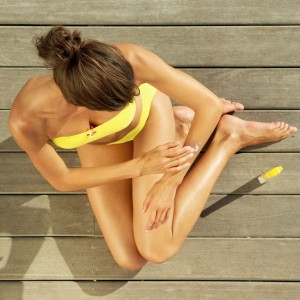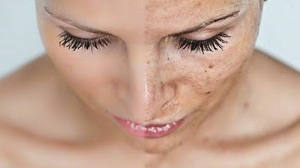 Summer has left, but has the damage it’s done to your skin remained?
Summer has left, but has the damage it’s done to your skin remained?
The sun makes us feel good, and in the short-term, make us look good. However, this love story doesn’t end well. Exposure to the sun causes wrinkles and age spots on our skin. Although we often associate a tan skin with good health, in reality, a tan obtained from being in the sun – or in a tanning booth – actually accelerates the effects of aging and increases your risk of developing skin cancer.
Sun exposure causes most of the skin changes that we think of as a normal part of aging. Over time, the sun’s ultraviolet (UV) light damages the fibers in our skin called elastin. When these fibers break down, the skin begins to sag, stretch, and lose its ability to go back into place. So while sun damage to the skin may not be apparent when you’re young, it will certainly show later in life.

How Does the Sun Change My Skin?
Exposure to the sun causes:
• Pre-cancerous (actinic keratosis) and cancerous (basal cell carcinoma, squamous cell carcinoma and melanoma) skin lesions – due to decreases in the skin’s immune function
• Benign tumors
• Fine and coarse wrinkles
• Freckles
• Discolored areas of the skin, called mottled pigmentation
• Sallowness — a yellow discoloration of the skin
• Telangiectasias — the dilation of small blood vessels under the skin
• Elastosis — the destruction of the elastic and collagen tissue (causing lines, wrinkles and sagging skin)
 Choosing a Sunscreen
Choosing a Sunscreen
“Nine out of 10 skin cancers are related to exposure to the sun”
Nine out of 10 skin cancers are related to exposure to the sun (Timothy C. Flynn, M.D., President of the American Society for Dermatologic Surgery). If you have been forgetting to apply sunscreen daily, then take into consideration that there are many ways that too much sun exposure can damage your skin, making it age prematurely. UV radiation increases wrinkles and moles, creates discolored spots or patches and can produce an uneven skin tone and leathery texture.
The fact is sunscreen can save your life. Buy a high-quality product with an SPF of 15 or higher; check its ingredients to make sure it offers broad-spectrum protection; reapply frequently and decide whether it works better for everyday incidental use or extended outdoor use. Finally, take a look at Natural Image OC’s sunscreen selection.